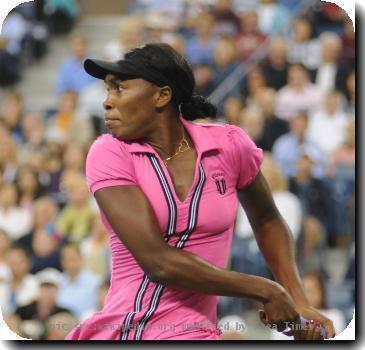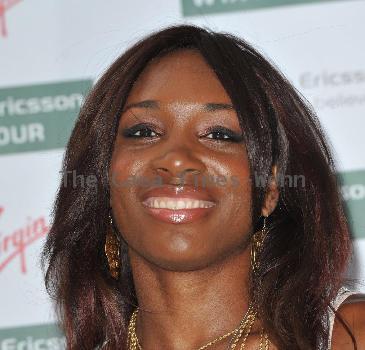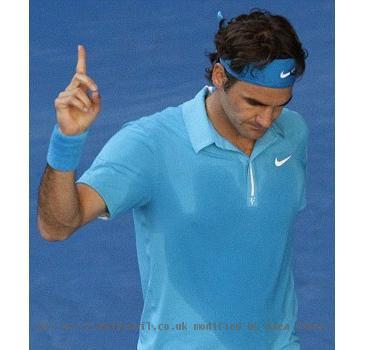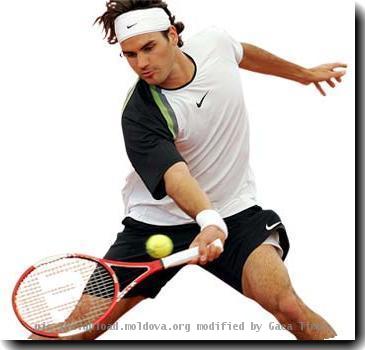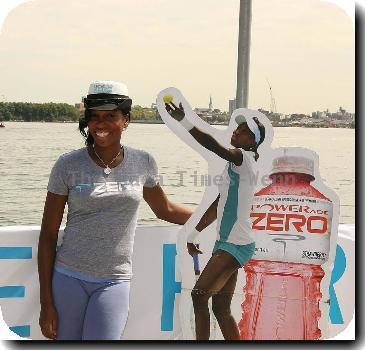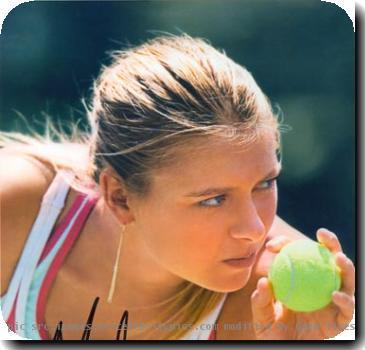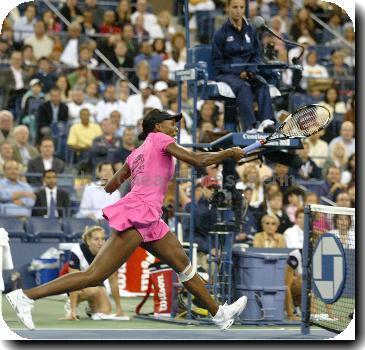Twisting in the wind: 18-year-old American Capra loses 6-0, 6-0 to Sharapova at US Open
By Howard Fendrich, APSaturday, September 4, 2010
No love lost: Sharapova blanks Capra 6-0, 6-0
NEW YORK — Maria Sharapova knows the story all too well: An unknown American kid shows up at the U.S. Open, upsets a seeded player, gains some buzz and belief, then gets a shot at Sharapova in the third round.
In 2009, that kid was Melanie Oudin, who beat Sharapova en route to the quarterfinals.
In 2010, that kid was Beatrice Capra and, well, let’s just say that Sharapova fared a little better this time around.
Overwhelmed by the stage, the circumstances, the 25 mph wind that knocked the neon lime visor off her head during a point, and — most of all — a solid Sharapova, the 18-year-old Capra didn’t win a game, let alone the match. Instead, 2006 U.S. Open champion Sharapova set up a fourth-round showdown with No. 1-seeded Caroline Wozniacki by blanking the 371st-ranked Capra 6-0, 6-0 on Saturday in Arthur Ashe Stadium.
“This was a new day,” said Sharapova, the first woman to win love-and-love at the U.S. Open in the third round or later since Martina Navratilova did it in the 1989 quarterfinals. “And what happened last year — I didn’t really want to go into the match thinking about it.”
On her very first serve of the afternoon, Capra nearly sailed the ball all the way to the opposite baseline. That might have been a result of nerves and the ever-swirling wind, which made the U.S. flag above the stadium flap loudly and caused four midpoint stoppages in play when debris rolled onto the court. Plenty of brown, concession-stand napkins and one plastic sandwich bag floated out of the stands; even two white towels made like tumbleweed.
“This is probably the toughest conditions we’re going to get,” Sharapova said.
Actually, other than whiffing on one serve return, Sharapova handled the conditions rather well; others did not. Fourth-seeded Jelena Jankovic, the 2008 runner-up at Flushing Meadows, shanked one serve straight up in the air off the top of her racket frame and finished with 41 unforced errors in a 6-2, 7-6 (1) loss to No. 31 Kaia Kanepi of Estonia.
“You get frustrated with the wind,” Jankovic said, “because you want to hit balls in (a) certain direction, and they go everywhere except where you want them to go.”
There were no such surprises in men’s action. Five-time U.S. Open champion Roger Federer reached the fourth round by beating Paul-Henri Mathieu 6-4, 6-3, 6-3; No. 3-seeded Novak Djokovic had no trouble getting past American wild card James Blake 6-1, 7-6 (4), 6-3 at night; No. 5 Robin Soderling, twice a French Open finalist, defeated Thiemo de Bakker 6-2, 6-3, 6-3; No. 19 Mardy Fish outlasted 32-year-old Arnaud Clement, the oldest man left, 4-6, 6-3, 6-4, 1-6, 6-3. Fish now takes on Djokovic for a berth in the quarterfinals.
Also, No. 13 Jurgen Melzer beat 2003 French Open champion Juan Carlos Ferrero 7-5, 6-3, 6-1; No. 21 Albert Montanes advanced when qualifier Ken Nishikori quit in the second set with a groin injury, two days after winning a grueling five-setter; and No. 17 Gael Monfils picked up a 7-6 (4), 6-7 (4), 6-2, 6-4 win over Janko Tipsarevic, who knocked off 2003 U.S. Open champion Andy Roddick in the second round.
Asked to describe the weather, Monfils said: “Awful. I mean, for me: awful.”
Capra, who’s from Ellicott City, Md., and trains at the Evert Academy in Florida, acknowledged struggling with the wind. She also acknowledged feeling jitters, and who could blame her, really? She won a U.S. Tennis Association playoff in August to earn a U.S. Open wild card; not only was this her first Grand Slam tournament — it was her first tour-level, main-draw event, period.
She became the lowest-ranked woman since 2002 to reach the U.S. Open’s third round by beating 95th-ranked Karolina Sprem in the first round, then 18th-seeded Aravane Rezai in the second.
And now she found herself going up against the 23-year-old Sharapova, someone Capra said she looked up to “when I was younger.” They never had met until Saturday.
So what was that like?
“Before the match, she would just walk past me and kind of, like, give me a glare, which is kind of intimidating,” Capra said. “After the match, when we shook hands, she was really nice.”
Oudin, who knows Capra from her junior days, sent a text message after the victory over Rezai, offering advice.
“I should have talked to Melanie before the match, because I was wondering — I was like, ‘Was Melanie this nervous before she played?’” Capra said. “I didn’t get the chance to, but I probably should have.”
Then again, the Capra of 2010 is not exactly the Oudin of 2009, a player who already had risen to 70th in the rankings before the U.S. Open, thanks to a run to the fourth round at Wimbledon that summer.
And, to be fair, the Sharapova of 2010 is not exactly the Sharapova of 2009, either.
“She doesn’t give you anything,” noted Capra, whose exit leaves Venus Williams as the only U.S. woman in the field. “Even though she’s beating me that badly, she’s still so focused.”
A year ago, Sharapova was still figuring things out after having right shoulder surgery in October 2008, still working her way back into match shape after missing the start of the season.
Against Oudin, Sharapova double-faulted 21 times, more than any woman had in any tour match all year.
Against Capra, Sharapova double-faulted five times, but otherwise was in strong form.
“I mean, I could have done better, and, you know, it was close in some of the games,” said Capra, whose parents, sister, grandparents, aunt and two friends were in the stands. “Plus, when you’re, like, losing that bad, it’s just in your head, like, ‘Just please let me win one game.’”
That’s what 2009 U.S. Open runner-up Wozniacki’s opponents might have been thinking: She has won 36 of 39 games so far, including Saturday’s 6-1, 6-0 victory over Chan Yung-jan of Taiwan. That followed a 6-0, 6-0 shutout — known in tennis as a “double bagel” — in the second round.
Other women advancing Saturday included No. 7 Vera Zvonareva, the runner-up at Wimbledon in July; No. 11 Svetlana Kuznetsova, the 2004 U.S. Open champion, who beat No. 23 Maria Kirilenko 6-3, 6-4 at night; and No. 15 Yanina Wickmayer, who lost to Wozniacki in the 2009 semifinals in New York.
The three games Wozniacki has lost so far this year are the fewest through three completed matches at any Grand Slam tournament since Mary Pierce dropped only two at the 1994 French Open.
“I have been feeling good out there,” Wozniacki said, the understatement of the week. “It just says something about how I’ve been playing, and the level I’ve been playing on.”
Tags: Events, French Open Tennis Championship, Maria sharapova, Men's Tennis, New York, North America, Roger federer, Svetlana kuznetsova, U.s. Open Tennis Championship, United States, Venus williams, Women's Sports, Women's Tennis
